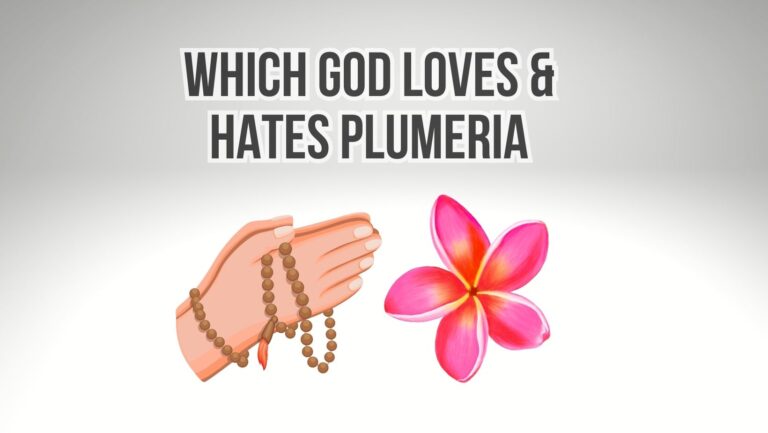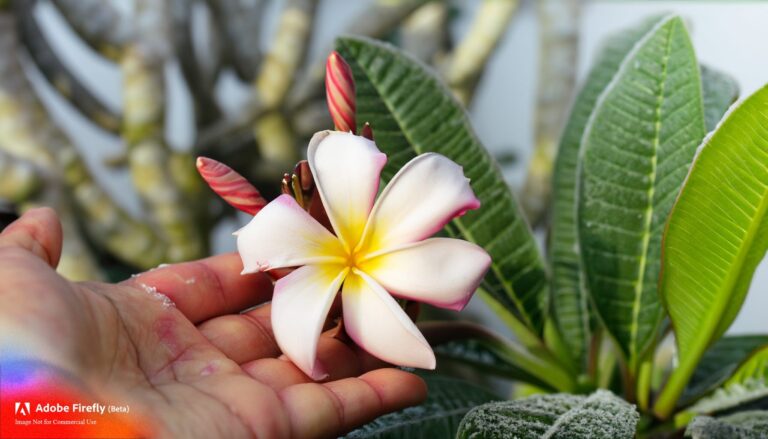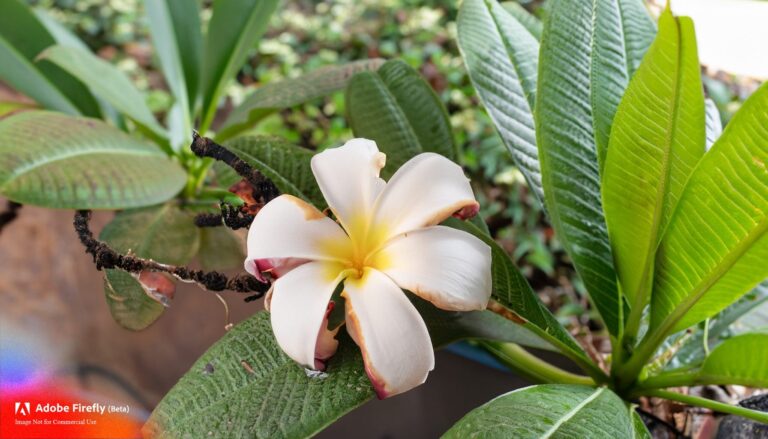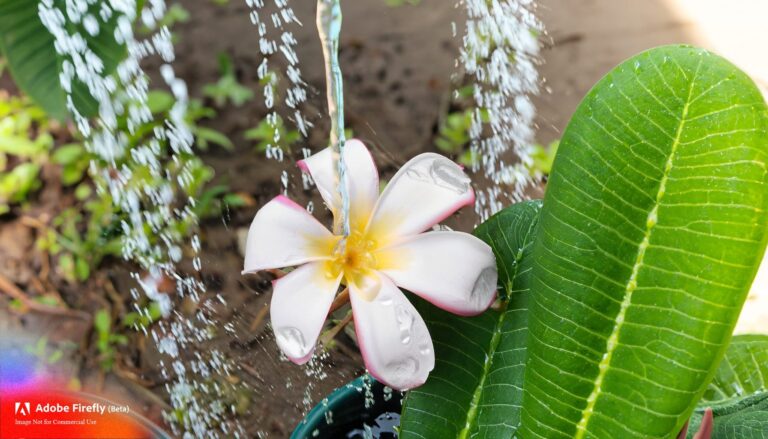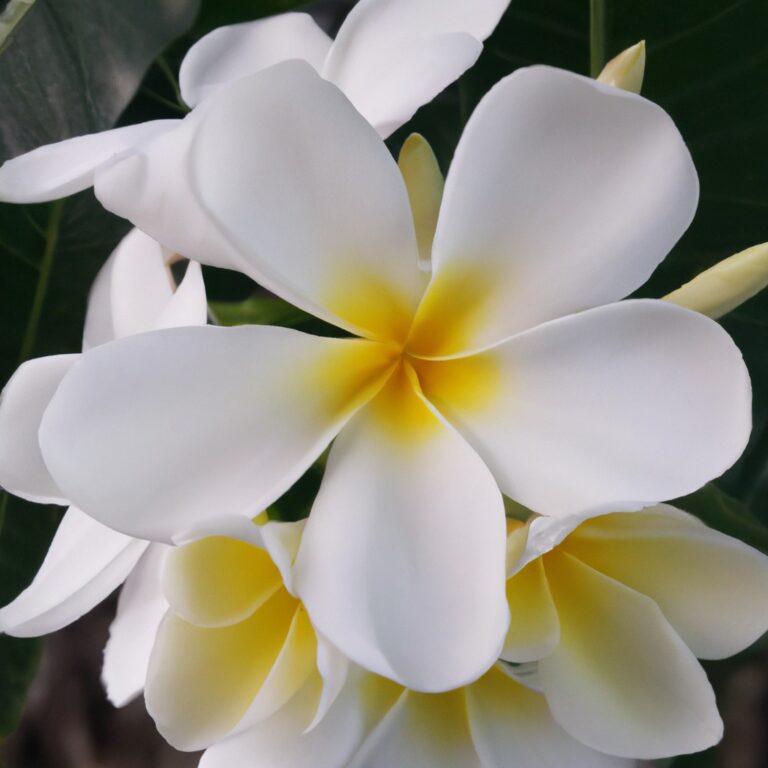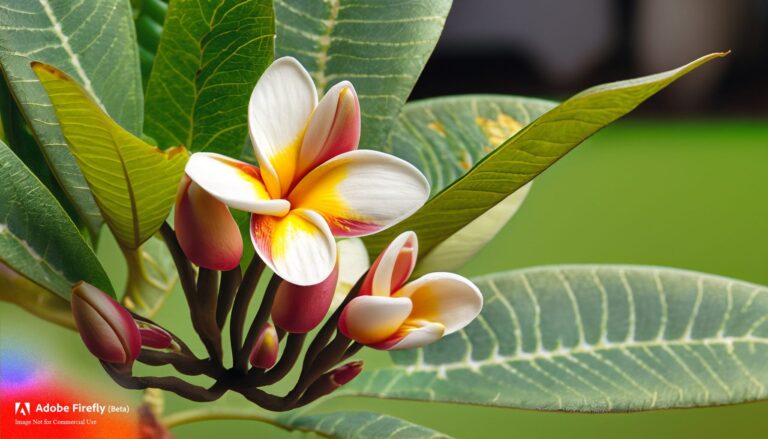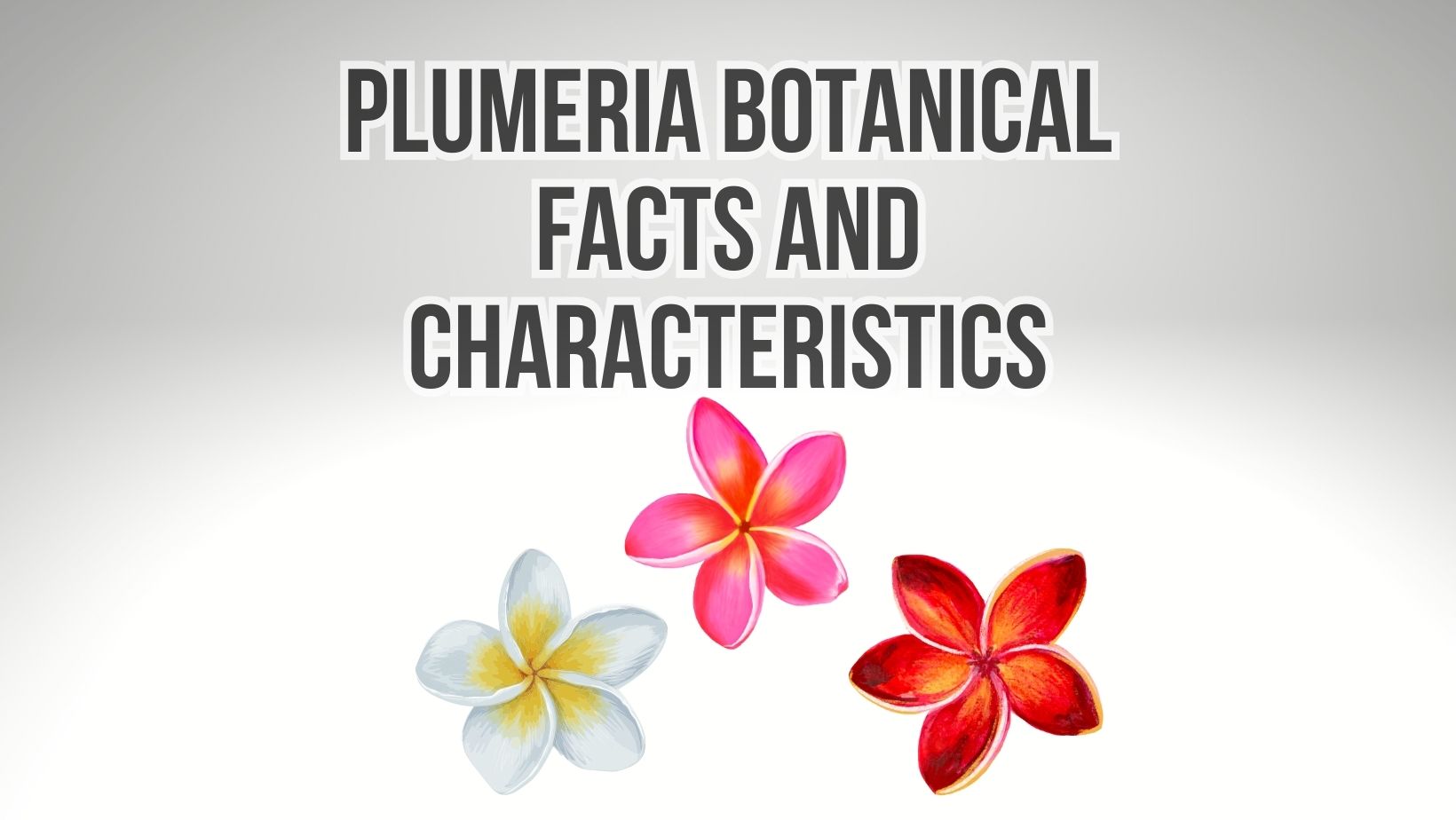
Plumeria, also known as Frangipani, is a tropical plant that captivates with its vibrant and fragrant flowers. In this article, we will explore the fascinating world of Plumeria, from its historical significance and botanical classification to its cultural symbolism and growing requirements. Whether you are a gardening enthusiast or simply intrigued by the beauty of nature, join us on this journey to discover the wonders of Plumeria.
Plumeria is a genus of flowering plants belonging to the family Apocynaceae. These exquisite plants are native to tropical and subtropical regions, including Central America, the Caribbean, and Southeast Asia. Plumeria flowers are renowned for their enchanting fragrance and stunning colors, ranging from pure white to vibrant shades of pink, yellow, and red.
Historical Significance of Plumeria
Throughout history, Plumeria has held significant cultural and symbolic value. In ancient Hawaiian culture, the Plumeria flower, or “Lei,” was used to create necklaces and garlands worn during special ceremonies and celebrations. The flower was associated with beauty, love, and devotion, making it a cherished symbol in Hawaiian traditions.
Botanical Classification of Plumeria
Genus and Species
The Plumeria genus encompasses approximately 15 recognized species, with Plumeria rubra and Plumeria obtusa being the most common. These species are further divided into numerous cultivars, each possessing its unique characteristics.
Family
Plumeria belongs to the family Apocynaceae, which includes other notable plants like Oleander and Vinca. This family is known for its diverse range of tropical and subtropical flowering plants.
Common Names
Plumeria is commonly referred to as Frangipani, derived from the name of an Italian noble family known for creating scented gloves in the 16th century. The name Frangipani is often used in Europe and other parts of the world, while Plumeria is more commonly used in the Americas.
Geographic Distribution of Plumeria
Native Regions
Plumeria is indigenous to several tropical regions, including Mexico, Central America, the Caribbean islands, and various parts of Southeast Asia. These regions provide the ideal climate for Plumeria to thrive and produce its stunning blooms.
Cultivation Worldwide
Due to its captivating beauty and fragrance, Plumeria has been cultivated and naturalized in various parts of the world with similar climatic conditions. You can find Plumeria plantations and gardens in countries such as Thailand, India, Brazil, Australia, and the United States.
Morphology of Plumeria
Plumeria plants exhibit distinct characteristics that make them easily recognizable and visually appealing.
Height and Size
Plumeria trees can reach a height of up to 30 feet, although some dwarf cultivars are smaller and more suitable for container gardening. The plants have a spreading canopy with branches that form a symmetrical shape.
Leaves
The leaves of Plumeria are thick, leathery, and elongated, with an oblong shape. They are arranged spirally along the branches and have a glossy green appearance. Some Plumeria species have variegated or multi-colored leaves, adding to their ornamental value.
Flowers
The flowers of Plumeria are the highlight of the plant, captivating with their vibrant colors and enchanting fragrance. The flowers are typically large and have a distinct funnel shape, consisting of five petals arranged in a spiral pattern. Plumeria flowers bloom in clusters, adorning the branches with a burst of color and scent.
Varieties of Plumeria
Plumeria boasts a wide range of varieties and cultivars, each with its own unique characteristics and colors. Let’s explore some of the popular ones:
Popular Cultivars
- ‘Singapore White’: This cultivar features large, pure white flowers with a yellow center, exuding elegance and grace.
- ‘Candy Stripe’: Known for its distinctive striped petals, this cultivar displays a beautiful combination of pink and white.
- ‘Aztec Gold’: With its vibrant yellow-gold petals, this cultivar adds a touch of sunshine to any garden or landscape.
Color Variations
Plumeria flowers come in an array of captivating colors. From soft pastels to vibrant hues, here are some common color variations:
- Pink: Ranging from pale blush to deep magenta, pink Plumeria flowers are a favorite among many enthusiasts.
- Yellow: Symbolizing joy and happiness, yellow Plumeria blooms brighten up any space with their cheerful presence.
- Red: Red Plumeria flowers create a striking contrast against the lush green foliage, making a bold statement in gardens.
- Rainbow: Some Plumeria varieties display multiple colors on a single flower, creating a mesmerizing rainbow effect.
Fragrance of Plumeria
One of the most enchanting aspects of Plumeria is its captivating fragrance. The flowers emit a sweet and intoxicating scent that lingers in the air, attracting butterflies, bees, and other pollinators. The fragrance is often described as a delicate blend of floral notes with hints of jasmine, citrus, and gardenia.
Aromatic Compounds
The distinct fragrance of Plumeria flowers is attributed to a combination of aromatic compounds present in their petals. These compounds, such as benzyl salicylate and phenyl ethyl alcohol, contribute to the sweet and alluring scent that wafts from the blooms.
Uses in Perfumery
Plumeria’s delightful fragrance has made it a sought-after ingredient in the perfume industry. The essence of Plumeria flowers is used to create exotic and floral scents, adding a touch of tropical allure to perfumes, lotions, and other fragranced products.
Cultural and Symbolic Significance of Plumeria
Plumeria holds cultural and symbolic importance in various traditions and societies. Let’s explore some of its significant meanings:
Traditional Uses
In addition to their aesthetic appeal, Plumeria flowers have been used in traditional practices for centuries. They are often incorporated into religious ceremonies, weddings, and festive celebrations, symbolizing love, beauty, and devotion.
Symbolism in Different Cultures
Plumeria carries different symbolic meanings across cultures. In Hawaiian culture, it represents positivity, joy, and new beginnings. In Hindu traditions, the flower is associated with the goddess of wealth and abundance, Lakshmi. Plumeria also holds significance in Thai, Balinese, and Mexican cultures, where it is revered for its beauty and spiritual connotations.
Growing and Caring for Plumeria
If you’re captivated by the allure of Plumeria and wish to grow it in your own garden, here are some essential care tips:
Soil and Light Requirements
Plumeria thrives in well-draining soil that is rich in organic matter. It prefers full sunlight for at least six hours a day to promote healthy growth and abundant flowering. Ensure that the planting location provides adequate sunlight and protection from strong winds.
Watering and Fertilizing
Plumeria plants have moderate water requirements. It is important to water them deeply but infrequently, allowing the soil to dry out between waterings. During the growing season, applying a balanced fertilizer formulated for flowering plants can help promote vigorous growth and abundant blooms.
Pruning and Propagation
Pruning Plumeria is beneficial for maintaining its shape and encouraging branching. Prune during the dormant season to remove any dead or damaged branches. Plumeria can be propagated through stem cuttings, which should be allowed to dry for a few days before planting in well-draining soil.
Common Pests and Diseases of Plumeria
While Plumeria is generally a resilient plant, it can be susceptible to certain pests and diseases. Being aware of these common issues can help you take appropriate measures to protect your plants:
Identification and Prevention
Some common pests that can affect Plumeria include aphids, mealybugs, and spider mites. Regularly inspect your plants for any signs of infestation, such as distorted leaves or the presence of small insects. To prevent infestations, you can use organic insecticides or introduce natural predators like ladybugs to your garden.
Treatment Options
If your Plumeria plants do become infested, prompt action is necessary. Treat the affected areas with appropriate insecticidal soaps or horticultural oils. Additionally, practicing good cultural care, such as maintaining proper watering and avoiding over-fertilization, can help keep your plants healthy and less susceptible to diseases.
Plumeria in Gardening and Landscaping
Plumeria’s exquisite beauty and enchanting fragrance make it a popular choice for gardens and landscapes. Here are some ways to incorporate Plumeria into your outdoor spaces:
Popular Uses in Gardens
Plant Plumeria as a focal point in your garden, allowing its vibrant blooms to steal the spotlight. Consider creating a dedicated Plumeria garden bed, showcasing different varieties and colors. You can also grow Plumeria in large containers, allowing for mobility and versatility in your garden design.
Landscape Design Ideas
In landscape design, Plumeria can be used to create stunning visual displays. Plant them along pathways or near seating areas where their fragrance can be enjoyed. Plumeria trees can also be used to provide shade and privacy in outdoor living spaces, adding a touch of tropical charm to the surroundings.
Plumeria in Arts and Crafts
Plumeria’s exquisite beauty has inspired artists and crafters to incorporate it into various creative endeavors. Here are a few examples:
Flower Garlands
Plumeria flowers are commonly used to create vibrant and fragrant flower garlands, also known as leis. In Hawaiian culture, leis are worn as a symbol of welcome, celebration, and affection. These intricate garlands are made by stringing Plumeria flowers together, creating a visually stunning and scented accessory.
Floral Arrangements
Plumeria blooms are often used in floral arrangements, adding a tropical touch and a delightful fragrance to bouquets and centerpieces. Their vibrant colors and elegant shape make them a popular choice for weddings, special occasions, and tropical-themed events.
Plumeria Festivals and Events
Plumeria holds a special place in various cultures and is celebrated through festivals and events around the world. Here are a few notable examples:
Celebrations Around the World
In Thailand, the annual Plumeria Festival, known as Dok Krachiao, showcases the beauty of Plumeria through flower exhibitions, parades, and cultural performances. The festival attracts locals and tourists alike, providing a vibrant and immersive experience.
Cultural Significance
Plumeria festivals and events often highlight the cultural significance and symbolism associated with the flower. They serve as a platform to celebrate the rich traditions, customs, and folklore associated with Plumeria in different regions.
Conservation Efforts for Plumeria
As with many plant species, some Plumeria varieties face threats to their natural habitats. Conservation initiatives are crucial for preserving these beautiful flowers for future generations. Here are some conservation efforts:
Threats to Plumeria Species
Habitat destruction, illegal trade, and climate change pose significant threats to Plumeria species. Deforestation and urbanization in their native regions contribute to the loss of their natural habitats, making conservation efforts vital.
Conservation Initiatives
Conservation organizations and botanical gardens play a crucial role in preserving Plumeria species. They focus on conserving genetic diversity, conducting research, and educating the public about the importance of protecting these plants and their habitats.
Conclusion
Plumeria, with its mesmerizing beauty and captivating fragrance, has captured the hearts of people around the world. From its historical significance and botanical characteristics to its cultural symbolism and practical uses, Plumeria continues to inspire and enchant. Whether you’re a gardening enthusiast, a lover of tropical blooms, or someone seeking to add a touch of elegance to your surroundings, Plumeria is sure to bring joy and beauty to your life. Explore the diverse varieties, care for them with love, and let the allure of Plumeria transport you to tropical paradise.
FAQs (Frequently Asked Questions)
- Can I grow Plumeria in a colder climate? Plumeria thrives in tropical and subtropical regions, but it can be grown in colder climates as well. However, in colder regions, it is important to protect the plants from frost during winter and provide them with proper care and insulation.
- How often should I water my Plumeria plants? Plumeria plants prefer well-drained soil and should be watered deeply but infrequently. Allow the soil to dry out between waterings to prevent overwatering, which can lead to root rot.
- Do Plumeria flowers have any medicinal properties? While Plumeria flowers are not commonly used for medicinal purposes, some traditional practices believe that certain parts of the plant possess healing properties. However, it is essential to consult with healthcare professionals before using Plumeria for any medicinal purposes.
- Can I propagate Plumeria from seeds? Plumeria can be propagated from seeds, but it is a more time-consuming and unpredictable method compared to stem cuttings. Seeds may take several months to germinate, and the resulting plants may not retain the exact characteristics of the parent plant.
- Are all Plumeria flowers fragrant? While most Plumeria flowers have a delightful fragrance, not all varieties are equally fragrant. Some cultivars have stronger scents than others. When choosing Plumeria plants for their fragrance, it is recommended to select varieties known for their aromatic qualities.

